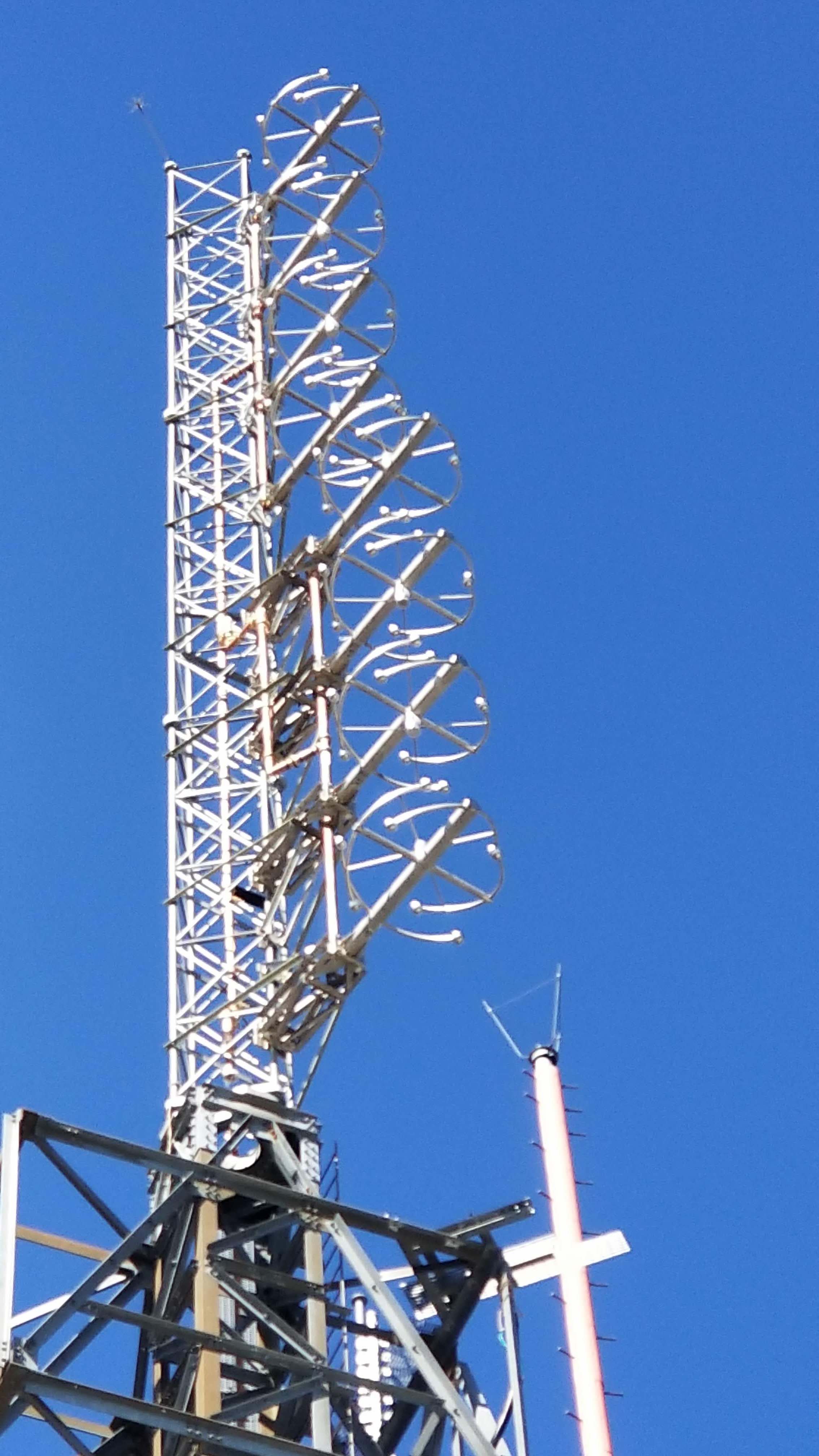
Dielectric to Introduce DCR-Q VHF TV Antenna
RAYMOND, ME / AGILITYPR.NEWS / March 11, 2020 / NextGen TV-ready antenna reduces footprint, expands configuration options for low-band VHF
Dielectric breaks through existing size and weight constraints of low-band VHF antennas with the debut of its new DCR-Q Series at the 2020 NAB Show. The DCR-Q Series reduces the space normally required on a tower to support a traditional, low-frequency panel or super turnstile channel 2 – 6 antenna, with its economical, versatile and space-saving design.
The DCR-Q design was adapted from the existing Dielectric DCR Series FM antenna family, with the goal of producing a more affordable and space efficient low-band VHF solution – a solution needed by broadcasters moving from a UHF to VHF channel during the TV repack. Some UHF broadcasters simply didn’t have the tower space available to support a traditional, large low-band VHF antenna and its associated weight and wind load.
One characteristic of antenna design is that lower frequencies require larger antennas, and low-band VHF TV (channels 2 – 6) antennas are typically the largest of all. The required metal and associated interconnections also add to the cost of the antenna. In some situations, a low-band VHF antenna is too large to use on an existing tower.
The DCR-Q resolves these limitations through a lighter, smaller form factor that can be side-mounted or top-mounted on towers, including structures once deemed inadequate to support low-band VHF systems. Additionally, the adaptation of the DCR Series ring-style design offers excellent circularity. VHF signals generally experience lower building penetration, and adding circular polarization with the DCR-Q improves indoor reception.
Engineering Innovation
Dielectric developed the DCR-Q concept in response to a requirement by Los Angeles broadcaster, KWHY-DT, which voluntarily moved from UHF to VHF Channel 4 as a result of the television repack.
“KWHY’s plight inspired our engineering department to design and build the low-band DCR-Q VHF antenna,” said Steven Moreen, Dielectric’s Western Regional Sales Manager. “The DCR-Q addresses VHF broadcaster requirements for broadband, high-power handling and circular polarity, in a lighter compact array with support for NextGen TV. We are now productizing the DCR-Q to serve a broader VHF customer base in the United States and international regions where low-band VHF television antennas are in demand.”
The DCR-Q antenna array is comprised of eight ring-style radiating elements. Each radiating element consists of large truncated helical elements, which provide a truly circular polarized signal. While the design borrows key elements from the DCR FM Series, the DCR-Q array is somewhat larger than its FM cousin to meet the low frequency channel requirements.
The DCR-Q is available in a two-bay configuration for low-powered VHF TV stations, and four or eight-bay configurations for medium-powered stations. While normally configured as an omni-directional antenna, the bottom half of a four or eight-bay antenna array can be offset from the upper half, creating a directional signal. This flexibility helped KWHY achieve the optimal directional pattern required to deliver their signal effectively across their Los Angeles service area.
Dielectric exhibits at Booth C2622 at the 2020 NAB Show, taking place April 19-22 at the Las Vegas Convention Center.

About Us
About Dielectric
Based in Raymond, Maine, Dielectric LLC is a wholly owned subsidiary of Sinclair Broadcast Group. Dielectric is a leading provider of innovative broadcast products. Now celebrating its 77th year of operation, the company builds and delivers antennas and RF systems optimized for every TV and FM radio broadcast need since 1942. Dielectric is an innovative, customer-centric organization with a long history of engineering excellence in designing and manufacturing high-quality broadcast solutions. As a trust partner of broadcasters worldwide, Dielectric maintains its legacy of advanced, precision RF solutions while building in features that prepare broadcasters for the future. More information can be accessed at www.dielectric.com.
Contacts
Links